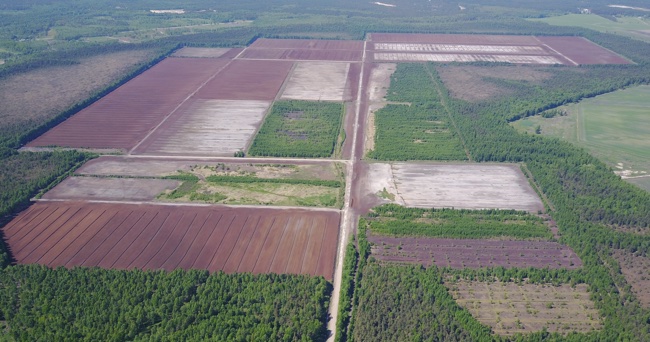Peat
Peat is loose or weakly compacted caustobiolith: organogenic sediment that contains no more than 50% of the mineral matter (dry weight) which have been piling up in high humidity or lack of oxygen that is a partial decomposition of biomass of plants. Dry matter of peat consists mainly of remains of decaying plants, degradation products of plant tissues, dark, amorphous materials that have lost structure: humus and minerals. Humidity in naturally moist peat is about 85-95%, depending on the degree of decomposition and peat type.
Peat is mainly formed in the swamp. Swamp is an excessively damp place where the original soil is covered with a layer of peat soil with a thickness in the wet spot originally is more than 30 cm. Formation and development of wetland areas could happen in different ways.
The main types of peat: high peat (mosses), low peat (green), and transitional peat.

The division of the types of peat depends on the origin of peat.
Light peat has a botanical origin - a mixture of partially decomposed remains of various peat mosses.
In other words, intense formation of swamps in Latvia is happening for the last 8000 years. The total area of wetlands is 10.4% of the total territory of the country. A detailed study of the estimated reserves of peat in the country amounts of 860 million tons. On average 825 thousand tons of peat are extracted each year.
Peat can certainly be regarded as one of the most valuable natural resources in Latvia.